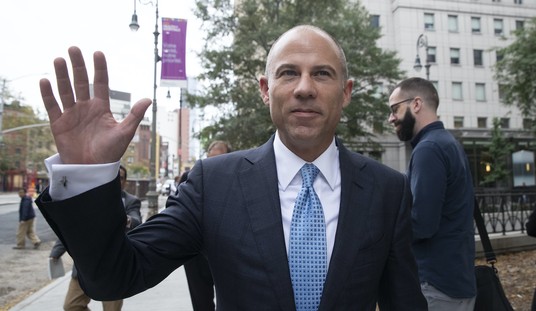This past August, I linked to a story about an Esquire author who was struggling valiantly to shrug-off the deeply engrained case of Bush Derangement Syndrome that permeated much of the New York publishing and magazine world–and only got worse as the election neared. Back then, I wrote:
Magazines like GQ , Vanity Fair and Esquire, published out of New York (you know, one of the two cities where 9/11 happened), are built around an assumed sense of New York Times-style elite liberalism that’s a very different mindset than that of most of its readers in “flyover country”. Maybe someday they–or their advertisers–will figure this out. (Or at least figure out that at least half their readership doesn’t think of John Kerry as a “political badass“.)
In the Weekly Standard, Noemie Emery writes that Vanity Fair’s advanced case of BDS finally caught up with the magazine last fall:
ON MARCH 6, THE Drudge Report noted the fact that newsstand sales for the magazine Vanity Fair had plummeted by 22.5 percent during the last half of 2004, attributed by the editor to three successive covers that showed pictures of . . . men. What Drudge did not cite is the parallel fact that this slide tracks exactly with the mutation of the magazine from a great escape read of the guilty-pleasure variety, the place to go for fatuous film stars, Princess Diana, and society murders, into a Bush-bashing rag of the fiercest variety, one that at times last year seemed almost possessed.
In the July issue (out early in June), readers looking for their quick fix of high life and low morals were startled instead to read a hatchet job on Bush’s female appointees and relations, a glowing account of Iraqi insurgents (“mothers, teachers, and seasoned warriors”), and a big wet kiss bestowed on former counterterror-chief-turned-Bush critic Richard Clarke. Subsequent issues featured an attack on Don Rumsfeld (by a media critic!), an even larger wet kiss bestowed on Joe Wilson (the publicity-hound spouse of outed spy Valerie Plame), attacks on the role of the church in the culture, claims that Bush’s indifference had caused 9/11, claims that Bush’s agriculture department had poisoned small children, an unreadable rant about the horrors to come should Bush be reelected, and a hilariously indignant and one-sided account of the Florida recount that only Al Gore could take seriously.
By September, in order to get at the good stuff–like the tale of an heiress who dropped dead in a health club–one had to wade through no less than four Bush-bashing pieces, including the editor’s letter, two different pieces decrying the neocon chickenhawks, and one very long story depicting the president as a dark reading of HenryV–a born-again wastrel and drunkard who led his country to eventual ruin via an ill-advised war. Every month, the magazine found new ways to kvetch about the president. Bush dodged the draft! Bush was mean to John McCain in the 2000 primaries! Bush stole the election in Florida, and–watch out for those touch-screens!–is planning to steal it again. No one can really know what causes a rise or fall in magazine sales, and it is always possible that large numbers of readers were so repelled by the sight of Jude Law (cover boy on one of the poor-selling issues) that they fled screaming. But it also seems likely that not a few readers took a quick look at the table of contents, and dropped the thing back in its rack.
The new Vanity Fair is a story the old one might have wanted to cover, as it points up an interesting trend: The really fierce strains of anti-Bush feeling come less from established political sources than from what might be called the “glitz-based community”–people connected to Hollywood, fashion, or celebrity media, who produce diversions and lifestyle advice. At the shallower end of the pool of arts and intellect, they tend to produce the facile and transient; they make TV shows, or write them; make clothes, or write about them; try to become, or failing that tend to the needs of, celebrities.
I used to read GQ, Esquire, and to a lesser extent, Vanity Fair fairly religiously in the 1980s. I’d start reading them again, if I thought their coverage would be a bit more balanced. In the past, Manhattan’s magazines (and newspapers) were cognizant of having a fairly diverse audience, including their flyover country readers, and didn’t try to obviously preach to them.
Of course, in the past, liberalism didn’t tilt as far left as it does today, either.









Join the conversation as a VIP Member